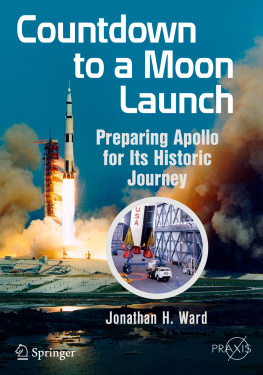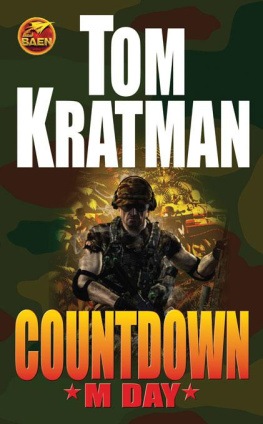1. Introduction
We live at a time when people appear to be less conscious of manned spaceflight than any period in the past 50 years. Humans have maintained a continuous presence onboard the International Space Station since November 2, 2000, and yet few people are even aware that there is an International Space Station. In the minds of the youngest generations, spaceflight is more likely to be the realm of science fiction or distant history. The Apollo era seems an impossibly long time ago to many people. Indeed, nearly two-thirds of the current population was born in the years after men last walked on the Moon. Is it any wonder that many people dismiss the possibility that we could have even gone to the Moon?
And yet, America did send 24 astronauts to the Moon on 9 missions in the late 1960s and early 1970s. We did it when computers were the size of rooms, when there were few communications satellites, there was no Internet, and there were still plenty of people alive who were around when the airplane was invented. A mere 34 years after Charles Lindbergh made the first solo transatlantic airplane flight, President Kennedy issued the May 25, 1961 challenge to land a man on the Moon and return him safely to the Earth. The Apollo program was conceived, the facilities were designed and built, three generations of spacecraft were tested in flight, and men landed on the Moon, all within the space of less than a decade.
How Was That Even Remotely Possible?
The Moon landing program was a massive effort to prove the superiority of the American way of life over that of the Soviet Union. The US needed to show the world that it could mobilize its best minds and its best workers to achieve a very difficult but peaceful objective. One consequence of that campaign was that the US government and NASA made sure that every aspect of the Apollo program was conducted openly and thoroughly documented for the whole world to see. Many dedicated individuals have been working over the past two decades to scan, preserve, and make publicly available the priceless records from the Apollo program.
Skeptics doubt it could possibly have happened, but the documentation clearly shows that landing on the Moon was achievable with 1960s technology, because it was a scientific and engineering challenge that could be broken into manageable pieces. Apollo technology was the culmination of the 60 previous years of development, the age when we conquered the skies. We learned how to propel airplanes through the air and how to shoot rockets into place in the first six decades of the twentieth century. Apollo was the capstone of the work in which scientists and engineers had already been engaged for many years. With lots of money available and disciplined, tenacious chipping away at the obstacles, there was no magic involved, no need for special effects.
The program achieved its political goal of demonstrating what a free society is capable of doing if it sets a lofty vision, commits to and funds a long-term plan, and then lets the experts work the challenges without political interference. Shared purpose, adequate funding, disciplined management of the program, dedication of workers at every level, brainpower, willingness to take risks, communication, and hard workthose were the factors that made the Moon landing possible.
Why a Book About Kennedy Space Center?
Those of us who were fortunate enough to be alive in the 1960s watched Apollo on our new television sets. We read about the program every day in newspapers, and we looked forward to the latest copy of Life magazine and its glossy photos of the latest space mission.
Nearly 50 years later, what do most of us remember about the Apollo program? First and foremost in the memories of the public at large and space historians in general are the astronauts and what they did on their missions. I would speculate that Apollo 11 is remembered for being the first landing, and Apollo 13 , Houston, weve had a problem. The general public is much less clear about what went on in the other missions.
Because of the movie Apollo 13 , Mission Control in Houston is probably the next best remembered part of the Apollo program. Mission Control rightly shared the spotlight with the astronauts during the performance of missions, as they kept the spacecraft and astronauts safe and successfully solved a myriad of problems as they cropped up.
Kennedy Space Center was the place where the rockets were launched. However, I am surprised at the number of people I meet who believe that Mission Control and Kennedy Space Center were the same thing. What went on at Kennedy Space Center before the launch of the mighty Saturn V rocket is beyond most peoples recollection. They may have seen photos of the rocket being assembled inside the Vehicle Assembly Building or being wheeled out to the launch pad, but how or why or when any of this happened is unclear.
What actually did go on at Kennedy Space Center? What was the day-to-day workflow? How did technicians and engineers assemble and test the spacecraft? Who did what? Why did it take so long? Why so many tests? What was it like to work at the launch pad on a Saturn V? What went on in the launch control center during a countdown?
More than 400,000 people across the United States worked on the Apollo program. The Apollo spacecraft and the Saturn rockets took shape from thousands of parts in plants in Louisiana, California, Alabama, and New York. Six months before the scheduled launch date, all the stages, modules, equipment, spacesuits, rock boxes, experiments, and everything else that was going into space, began to arrive at Kennedy Space Center. KSC was where it all came togetherwhere 24,000 men and women assembled, tested, and launched the most sophisticated manmade object of its time, and its brave crew of three astronauts, on a journey to the Moon. During the hectic years of 1968 and 1969, all of this activity was going on for three missions at a time.
This book tells the story of the hive of activity at Kennedy Space Center in those final 6 months of a Saturn rocket and Apollo spacecrafts life on Earthhow workers performed the final assembly and test on the vehicles for Apollo/Saturn, stacked them into a rocket, ran through all the tests on the launch pad, and then blasted the Saturn V on its way to the Moon.
How This Book is Organized
This books scope is the operations at Kennedy Space Center that prepared Apollo 11 for launch. The organizing principle is the processing flow of the hardware through KSC, from when the stages and modules first showed up at the loading dock, through assembly and test, and culminating in launch. The KSC processing flow was essentially the same for all Apollo lunar missions. At appropriate times in the description of the Apollo 11 flow, we will bring in discussions of interestingand often frighteningmishaps that occurred during the workflow on other missions.
Rather than trying to re-tell what has been better told elsewhere, we will concentrate on the story that has not been told as oftenthe behind-the-scenes processing flow at KSC. Throughout this book, you will find first-hand accounts of the challenges and dilemmas faced by KSC workers preparing the Apollo missions. Was one of Apollo 11 s Saturn V stages sabotaged? How could last-minute changes to Eagle s landing gear be made and tested while it was at the launch pad? What caused security cars to explode near the launch pad on Apollo 13 ? How did the launch of Skylab 2 almost end in disaster, without anyone even knowing that it was in danger?









